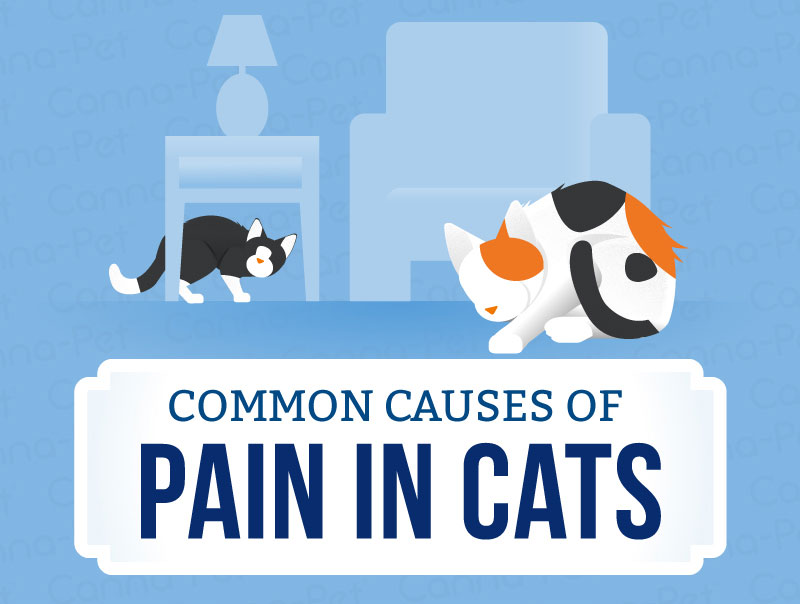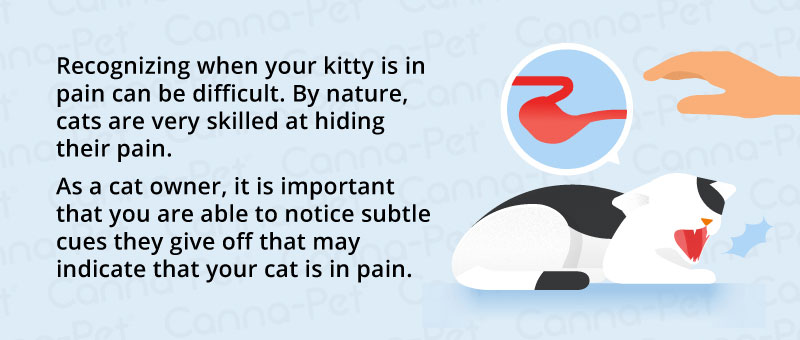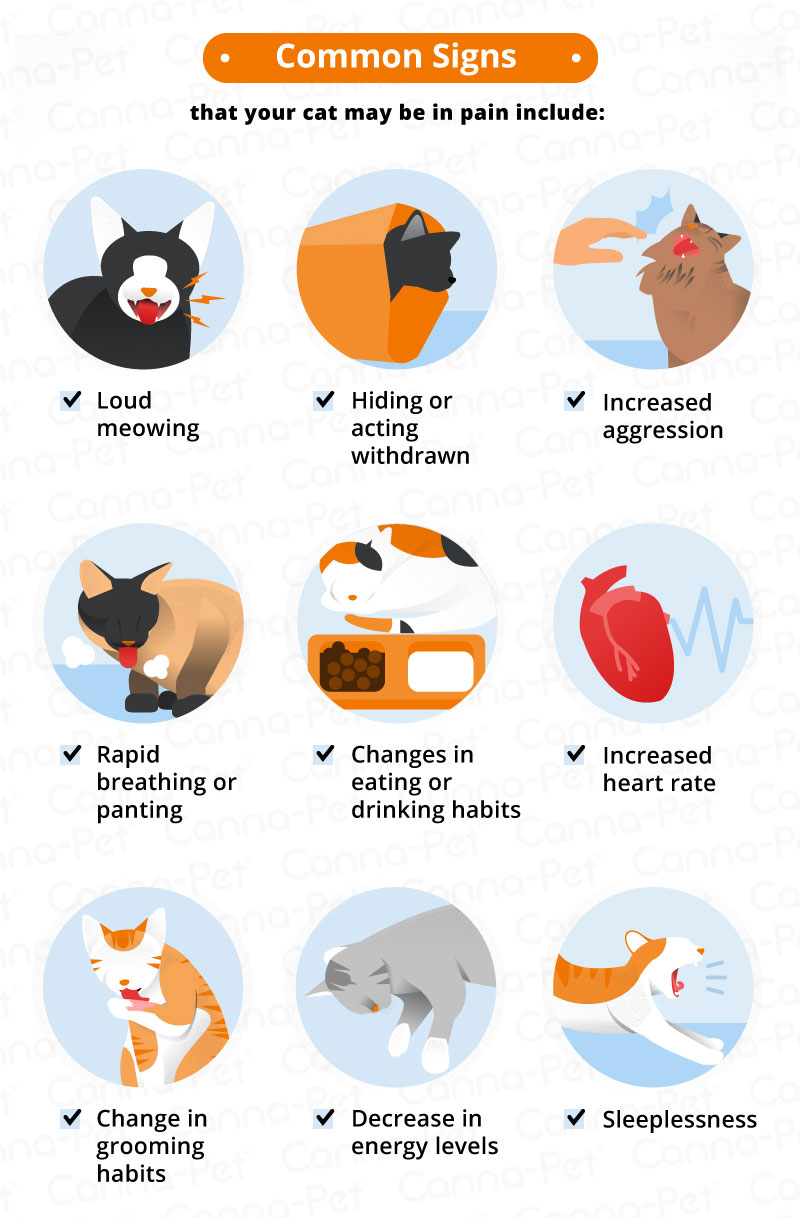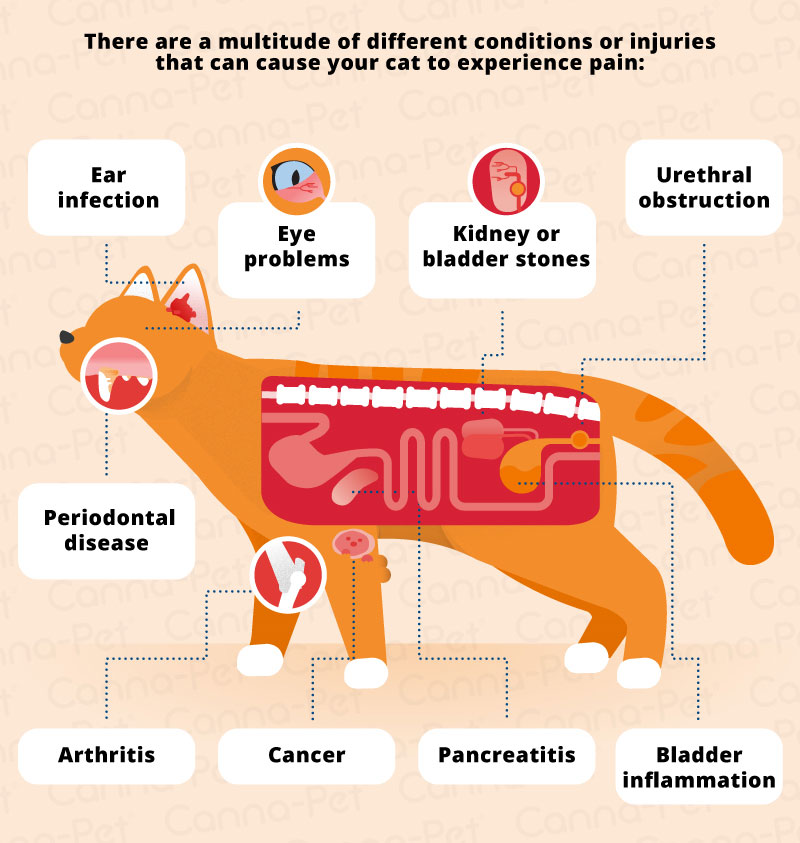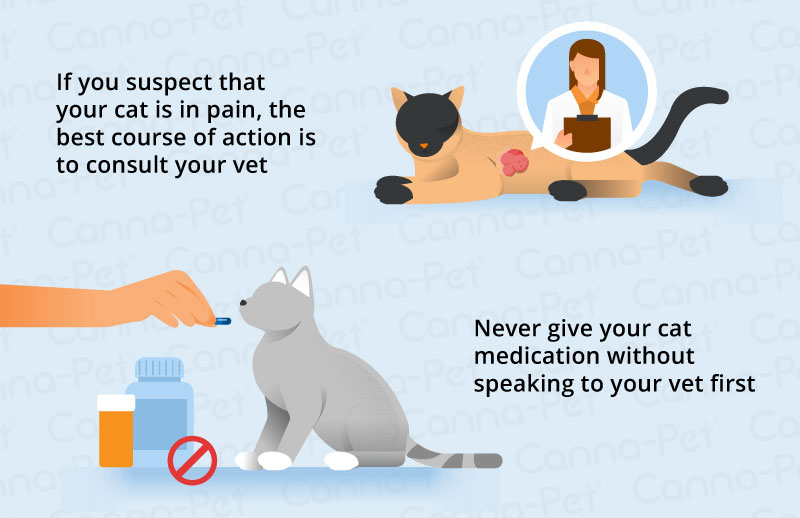Cats are great, cuddly, low-maintenance pets. And as a cat owner, you do everything you can to make sure they have a good and healthy life. But are you able to tell when your cat is in pain?
If you have to really think about it, don’t fret! It can be difficult to notice your cat in pain and identify the source. This is because cats, by their very nature, are skilled at hiding their pain.
This had an evolutionary purpose to protect them out in the wild, where large animals seek out the young and weak. But for domestic cats who depend on their owners, it’s important that you are able to notice subtle cues they give off to pick up on their discomfort.
Symptoms of Pain in Cats
There are many reasons a cat could be in pain, and while they are masters at hiding it, they are only causing themselves further harm by not asking for help. There are actually a lot of things you can pay attention to in order to outsmart your cat and help them in the long run.
A few signs that your cat might be in pain:
Loud Meowing
Cats in pain don’t often vocalize it, but if your cat never makes much noise and suddenly starts loudly howling, it might be a sign that he is in pain. It could also mean your cat is looking to mate, but if your cat is neutered, this is obviously not the case. Conversely, some cats might have an opposite reaction and stop meowing due to pain, so a normally vocal cat that goes quite could also be a warning sign.
Hiding More than Usual & Acting Withdrawn
Cats tend to hide in different places when they are in pain. You might find your cat in closets, under furniture, our in hiding spots out in the yard. An injured cat will seek secluded spaces and be less social than usual. It can also be the sign of the last stage of pregnancy, but again, if you have a neutered or male cat, it is probably pain.
Heightened Aggression
Cats in pain are more likely to bite and scratch. This will happen not only with strangers, but even toward their owners and people they are familiar with. Instances of biting and scratching will happen most often when a painful area is touched, or if the cat thinks you are going to touch or move the area. Your cat may also hiss and run away if he senses a sensitive area is going to be touched.
Rapid Breathing or Panting
Cats that are in pain may exhibit changes in their breathing. Their breathing may be faster or more shallow than normal, and some may even pant. Extremely attentive owners may even notice changes in their cat’s abdominal and chest muscles as he breathes.
Increased Heart Rate
An increase in heart rate is another sign of cat pain. Your cat’s heart rate will often rise when the painful area is touched. If you don’t know how to measure your cat’s heart rate, take a pet first aid course or ask your veterinarian to show you how.
Changes to Your Cat’s Eyes
The eyes can be strong indicators that your cat is in pain. This goes for pain in the eyes themselves or elsewhere in their bodies. Pain elsewhere in the body will also cause dilated pupils, while pain in the eyes will constrict them. Increased squinting can also indicate your cat is in pain, as can eyes that appear to be bloodshot.
Changes in Eating and Drinking Habits
Cats in pain will often lose their appetite. If they refuse to eat and drink, they may be suffering from a toothache or gum problems. If the cause of pain is in their mouths, they may drop food or water out. If your cat doesn’t eat for more than 48 hours, you should see your veterinarian.
Changes in Grooming Habits
A cat with an illness or a cat that is experiencing generalized pain may stop grooming himself, which can be an alarming behavior. Cats also may over-groom an area if they have a wound or something wrong with their skin.
Agitation and Sleeplessness
Cats in pain may become very agitated. They might pace around more than usual and not be able to calm down. Agitated cats in pain will often stay up through the night.
Decreased Energy
Cats in pain will often have a general decrease in their level of activity. If you notice that your usually active cat is spending more time sleeping or is running and jumping less than usual, it may be indicative of pain.
Altered Movement or Gait
If your cat is moving around less or seems to get around differently, it may also be a sign of pain. Depending what is ailing your cat, they still may get around the same amount, just move differently, so it is important to pay close attention to your cat’s natural movements to pick up on these signs. They can include hunching a bit more, going limp or taking their time up and down the stairs.
Changes in Bathroom Habits
Cats experiencing back pain may have a difficult time getting into position to go to the bathroom. This may cause a cat to become constipated if things go too far. Cats with pain in their bones and joints will also have a difficult time getting in and out of their litter boxes, so they might start going outside of the box.
Body Contour Changes
Swellings, be they on your cat’s legs, body, or face, could be an indication of a painful condition, such as tooth root abscess, inflammation, or cancer.
Purring
Yes, purring! Often thought of as a sign of pleasure, increased purring can actually also be a sign of pain. If your cat purrs while displaying any of the signs above, it may be out of pain instead of pleasure.
Causes of Cat Pain
Some causes of pain in cats will be obvious, like a broken bone or gaping wound. If your cat has recently had a surgical procedure, that is likely to result in some discomfort. However, those obvious causes won’t be the only reasons.
There are plenty of other common conditions that can cause pain in your cat. Because of your cat’s nature, they will often go unrecognized by their owners. Any of the conditions listed below have pain components attached to them, so if your cat encounters one of them, make sure you talk with your veterinarian about how to best manage your cat’s pain.
Here are several conditions that cause pain in cats:
- Cancer – especially bone cancer, squamous cell carcinomas of the mouth, any type of cancer that enlarges a capsular organ, such as a kidney or the spleen, and tumors that press on important internal structures.
- Kidney or bladder stones
- Bladder inflammation (cystitis)
- Urethral obstruction
- Ear infection – these can be very painful for cats, especially if the infection has been going on for a long time and/or it involves the middle or inner ear
- Inflammation of the pancreas (pancreatitis) and/or the stomach (gastritis) and intestines (enteritis)
- Digestive tract obstruction, including linear foreign body obstructions
- Arthritis of the hip(s), elbow(s), or any other joint(s) (Note here: cats actually develop arthritis far more often than people realize, meaning that there are many cats that are living with the pain of undetected and untreated arthritis.)
- Periodontal disease or tooth fracture
- Resorptive tooth lesions (often called FORLs or neck lesions)
- Eye problems such as glaucoma, uveitis, or corneal ulcers
- Feline Aortic Thromboembolism, or FATE
There are also several causes that come from outside sources. These include any trauma or injury, the ingestion of poisons, and surgery. Owners will generally know if their cat has encountered any of these, but outdoor cats get themselves into trouble more often.
What do I do if I suspect my cat is in pain?
While the signs of cat pain are often very subtle, you, as the owner, know your cat better than anyone. If you know your cat’s normal behavior, it is much easier to be able to tell when something is not right. This will include their gait, attitude, sleep patterns, energy level, appetite, and more.
If notice any or several of the signs listed above or think your cat may be in pain, the best course of action is always to consult your veterinarian. Never give your cat medication unless instructed to do so by your vet. Tylenol in particular can be very harmful to cats. Many pet owners self-prescribe medications to their cats without first checking with their veterinarian, sometimes with tragic results. Avoid potential tragedy and follow the appropriate course of action to treat your cat’s pain.
What medical treatments are safe for cat pain?
As mentioned above, NEVER self-prescribe medication to your cat. This is extremely important for your cat’s well-being. Prescribing the proper medication for your cat is difficult even for your veterinarian.
Cats present a challenge to the veterinary community because the medical options available for feline pain relief are limited. This is because many of the medications used to treat pain in dogs aren’t safe for cats.
If a cat requires surgery, no matter how minor a procedure it may be, there will be some pain involved, particularly in the recovery process. If your cat must undergo surgery, it is important to work with your vet to develop a pain management plan for before, during and after surgery.
Vets will often pre-medicate the cat before anesthesia to decrease his pain response. This can also help the effectiveness of the anesthesia. Cats also often get stressed going to the vet, an anti-anxiety drug may also be administered to help calm him down before the procedure. After, your vet will prescribe medication to help your cat manage its pain during recovery.
Prescribing the proper pain medication for cats requires special knowledge and careful attention. Your vet should be up-to-date on the latest trends and most appropriate medications for every condition.
Again, ONLY give your cat pain medication under the close supervision of your veterinarian.
Are there any other options for pain relief?
That really depends on your cat. Not only his level of pain, but what he is willing to tolerate from a treatment perspective. But there are several things you can do alone or in tandem with medication to help manage your cat’s pain.
Veterinary chiropractic care is an affordable option that can help alleviate pain and reduce joint degeneration. Massaging your cat can help reduce inflammation and pain in its damaged tissues. Acupuncture and prolotherapy are other options that can be beneficial to cats in pain.
You can also add supplements to your cat’s diet to give it extra nutrients for healing. Your veterinarian can help you pick out supplements and CBD dosage that will be beneficial to your cat. An overall healthy diet is a great option as well.
It’s challenging to know when your cat is in pain, but taking the steps to notice and then treat them will help them live happier, longer lives.
Canna-Pet® Success Story: Popple
When Popple was diagnosed with immune mediated polyarthritis, he was prescribed a steroid called prednisolone. However, after seven months, even high doses of this drug was not effectively managing the extreme pain associated with the condition.
His owners worried that if his pain could not be managed and his quality of life did not improve, they would have to consider euthanasia. However, when they started him on Canna-Pet capsules, they noticed that his pain was immediately completely gone. Popple is now back to his happy, energetic, fun-loving self and his owners have been able to lower his prednisolone levels.
Interested in buying CBD for cats to possibly help relieve pain for your feline friend? Check out our cat CBD products from pet treats, hemp oil and more!


